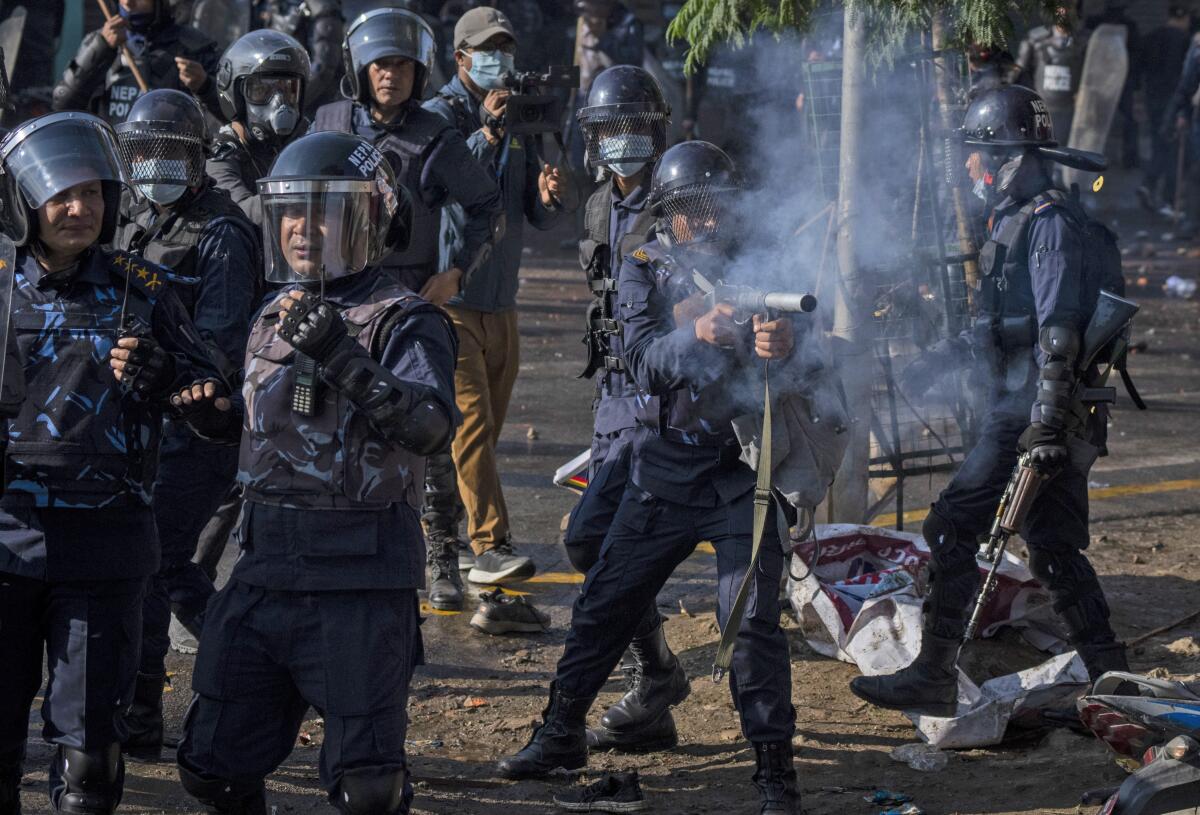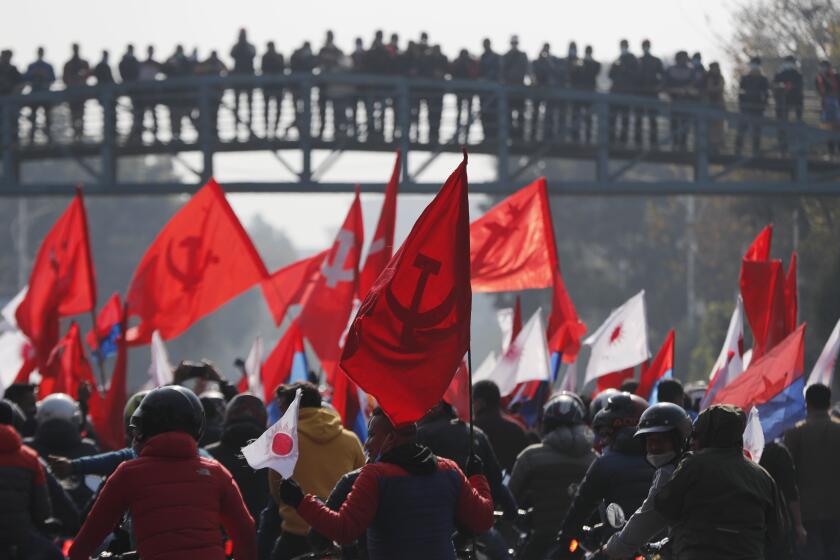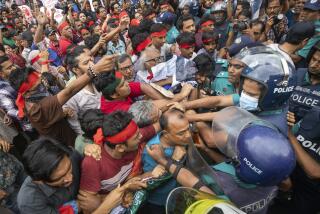Thousands of protesters demanding restoration of Nepal’s monarchy clash with police

- Share via
KATHMANDU, Nepal — Riot police used batons and tear gas to halt tens of thousands of supporters of Nepal’s former king who attempted to march to the center of the capital Thursday to demand the restoration of the monarchy and the nation’s former status as a Hindu state.
The protesters, waving the national flag and chanting slogans supporting former King Gyanendra, gathered on the edge of Kathmandu and attempted to move toward the center of the city. Riot police blocked them, beating them with bamboo batons and firing tear gas and water cannons. There were minor injuries on both sides.
Authorities had banned protests in key areas of the city in advance of the rally.
“We love our king and country more than our lives. Bring back the monarchy. Abolish the republic,” the crowd chanted.
Many want to ensure that the loathed heir apparent doesn’t ascend to the throne, even if that means abolishing it.
Supporters of the former king came to Kathmandu from all over the country to demand the return of the monarchy, which was abolished in 2008. They accused the government and political parties of corruption and failed governance.
Weeks of street protests in 2006 forced Gyanendra to abandon his authoritarian rule and introduce democracy.
Two years later, a newly elected parliament voted to abolish the monarchy and declared Nepal a republic with a president as head of state.
Since then, Gyanendra has been living as a private citizen with no power or state protection. He still has some support among the people but little chance of returning to power.
The demonstrators also demanded that Nepal be turned back into a Hindu state. The Himalayan nation was declared a secular state in 2007 by an interim constitution.
More to Read
Sign up for Essential California
The most important California stories and recommendations in your inbox every morning.
You may occasionally receive promotional content from the Los Angeles Times.














